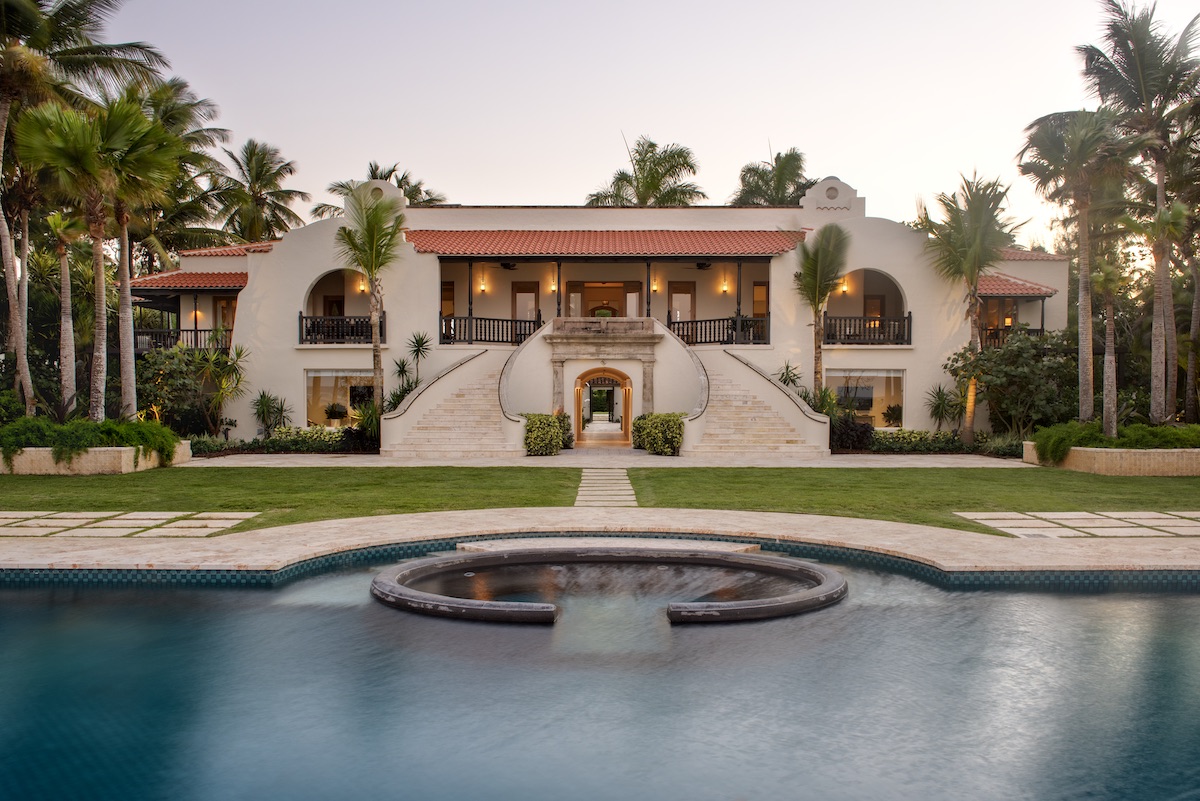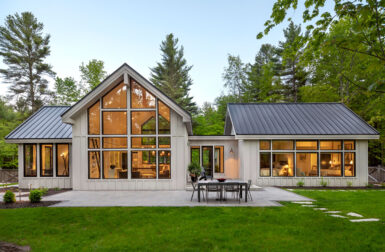A verdant, 8,000 square foot villa with a keen aviation past succumbed to the 2017 hurricane; then Champalimaud brought it back to life.
The 1920s Mission Revival estate, which had passed through some famous hands, was ravaged by Hurricane Maria. The property was affectionally named “Su Casa” and was first built in 1928 by 28-year-old Clara Livingston. (Coincidentally, Livingston built this home after her father’s wooden “finca” home was torn apart in another hurricane, San Felipe.) The young, aviation-obsessed Livingston painted Su Casa pink, built her own airstrip on the reserve, and invited her good friend—and the first female aviator to fly solo across the Atlantic Ocean—Amelia Earhart, to visit, stay, play, and rest in her abode.
Su Casa would become one of the last places Amelia Earhart and her navigator Fred Noonan were seen alive. The duo stayed here on their famous journey around the world, they disappeared shortly after; it was the last time Clara Livingston saw her friends.
Livingston then sold the home to Laurance Rockefeller; it was later reopened as a hotel. It sits within the larger property of Dorado Beach, a Ritz-Carlton Reserve, replete with golf courses, a decadently-decorated Spa Botanico, as well as bike trails that go on for miles, leading guests from the beach to the wetlands to the forest in one seamless ride.
Hurricane Maria plundered this breezy landscape when it reached the coast of Puerto Rico in 2017. Trees toppled, ceilings caved in, floors warped. It was a heartbreaking sight to see the gem of Dorado Beach destroyed and falling apart.
Anna Beeber and Elisabeth Rogoff, from the New York based studio Champalimaud, made it their mission to give life back to Su Casa by renovating and furnishing it into an elegant, luxurious five bedroom villa.
They decided on a pared-back, neutral palette with natural oak ceilings and black and white tile floors. Many of the interior furnishings, from the side tables, the sofas, and the upholstered benches, were custom made by Champalimaud to ensure they complemented the primary features of the home perfectly.
Thereafter, they carefully selected distinct pieces from the likes of Minotti, Home Nature, rugs by Tibetano, and chairs by Richard Wrightman, so that the spacious estate wouldn’t feel uniformly made or factory-ordered but more personal, eclectic—a place of character that accumulated through time.
For example, in the dining room, Beeber explained that around a grand table, they mixed and matched chairs from Carl Hansen, Adrianna Shamaris, and Smillow Design so that it was more fun and laid-back.
It seems like the last thing the designers want is for Su Casa to be taken too seriously or become too static, so family time, free movement, and relaxation were at the top of their priority list. One major change Beeber and Rogoff made so as to accommodate their vision of domestic bliss was to extend a balcony and bring it indoors. “Parents can open all the doors of the house and kids can run freely,” Beeber explains, “It also makes it feel more like a family home that you really live in and take your shoes off in, and less like a rental estate with an outdoor porch.”
The barefoot luxury extends to each of their 5 rooms, which they specifically designed to be equally appealing. “You don’t want to feel like the one that got the worst room, so every room has special features,” says Beeber. One room has a swinging hammock, another has an outdoor shower and patio, a third has a cosy, curvy sofa for lounging inside or hosting more intimate conversations with family and friends.
Outside, the blue-and-green tiled infinity pool merges in view with the North Atlantic waves beyond. Palm trees, tall and abundant, frame the property and give guests a sense of privacy and seclusion from the outside world.
It’s no wonder that many famous celebrities and guests have stayed in this home, continuing the legacy of Clara Livingston and her friend Amelia Earhart—to provide a sanctuary for the well-traveled to take off their shoes and prop up their feet, to pause for a few nights, to move within a sprawling home with comfort, ease and delight; the same kind of feeling that travelers seek when they roam afar.


























